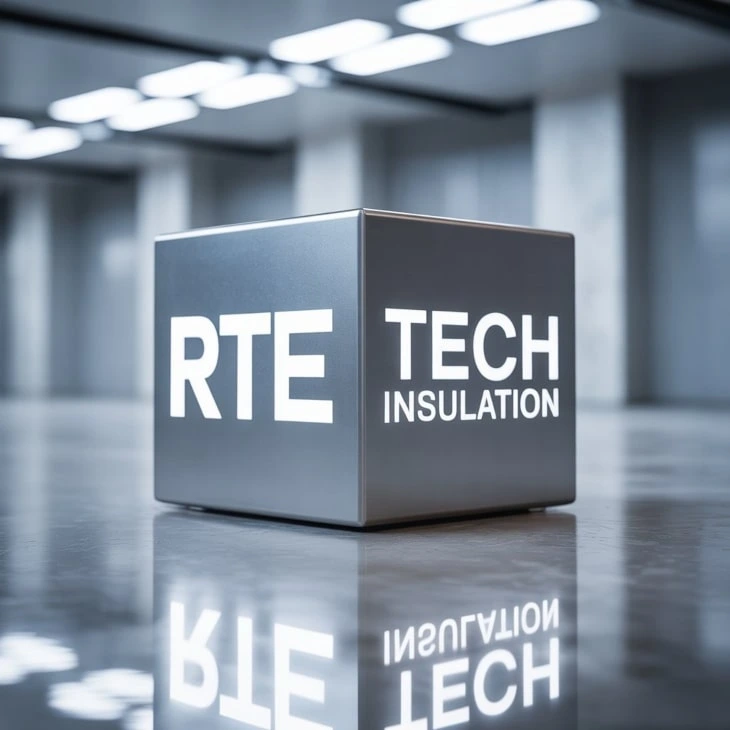If you’re renovating, building, or improving the energy efficiency of your home, choosing the right insulation is crucial. You want durability, moisture resistance, stable thermal value, and ease of installation. r tech insulation delivers on all these fronts. From my hands-on experience—installing it in basements, crawl spaces, exterior walls, and under slabs—I’ve seen how this rigid foam maintains comfort, reduces heating and cooling costs, and resists common issues like mold or sagging. This article explains what makes R-Tech stand out, how to use it effectively, and whether it’s the right insulation for your project.
What Is R-Tech Insulation?
R Tech is a rigid expanded polystyrene (EPS) board specially engineered with polymeric laminate facers. Those facers resist water, mold, and physical wear. Available both in standard boards and lightweight fanfold form, it meets industry standards for strength and insulation value. r tech insulation typically offers around R‑3.9 to R‑4 per inch of thickness and comes with a warranty ensuring long‑term thermal performance. Its mix of strength, moisture resistance, and ease of handling makes it a go‑to for both pro builders and DIYers.
Explore more insights on our homepage for the latest updates.
Why Choose R Tech: Key Benefits
Moisture-resistant and Mold-Proof
Unlike fiberglass or drywall zones prone to dampness, R Tech’s facers shed water and resist mold. This makes it ideal for basements or exterior sheathing where moisture exposure is more likely.
Stable Thermal Performance
Many foam insulations lose R‑value over time as their gases diffuse. R Tech’s EPS core, however, remains stable, preserving its original R‑value without degradation.
Cost‑Effective Efficiency
R-Tech often costs less than other rigid foams yet delivers comparable insulation per inch. Its affordability combined with performance makes it a strong value option.
Easy to Install
EPS boards are lightweight and can be cleanly cut with simple tools. There’s no irritation from fiberglass fibers, and installation is straightforward whether on interior walls, crawl spaces, or under siding.
Real-World Applications: Where R Tech Shines
Under-Foundation and Crawl Spaces
Installing R-Tech beneath a concrete slab—a common technique in cold climates—creates a thermal barrier and helps stabilize temperature. Its compressive strength means it can bear weight without compacting.
In crawl spaces, lining walls with R-Tech prevents condensation, supports moisture control, and helps maintain indoor temperature balance year-round.
Exterior Sheathing and Retrofit Walls
Applying R-Tech as continuous insulation outside studs reduces thermal bridging. It also enhances water resistance before siding is applied and improves the building envelope’s resiliency.
Basement and Garage Walls
Basement walls insulated with R-Tech remain dry and comfortable. Because of its laminate facers, R Tech doesn’t trap moisture the way mineral wool or fiberglass often can, making it a safer long-term solution.
Attic or Roof Underlayment
Laying lightweight R-Tech under a metal roof can significantly reduce attic temperatures and ease the load on air conditioning systems, especially during hot summer days.
Step‑by‑Step Installation Guide
Install R Tech carefully to maximize its benefits. First, measure your surface and cut panels for a tight fit. Use adhesives that are safe for EPS foam on sheathing or framing surfaces. Once placed, tape all panel seams with compatible adhesive tape, and seal around edges to prevent air infiltration.
After insulating, cover panels with drywall, siding, or a protective finish—R Tech is not certified for exposed installation. Finish exterior installations promptly to avoid sun or weather exposure. Finally, inspect connections around windows or penetrations and reseal any gaps.
Common Challenges and How to Address Them
Installation errors can reduce effectiveness. Failing to seal seams or compressing the material reduces thermal resistance. Exposing boards to UV light for extended periods can degrade the facer. Make sure to finish installations promptly.
Using the wrong type of sealant or attaching r tech insulation with solvent-based adhesives may damage the foam and void the warranty. Always use adhesives rated for EPS foam and compatible with its laminated facer.
Comparing R-Tech to Other Insulation Types
Compared to fiberglass batts, R-Tech resists moisture and prevents microbial growth. Versus XPS or polyiso foam boards, R-Tech often offers better long-term performance at a lower cost, though polyiso may offer higher R-value per inch in warm climates. Spray foam has a high R-value and great sealing but is expensive, requires professional applicators, and cannot be easily removed or reused. R Tech provides a middle ground of efficiency, durability, and DIY-friendliness.
Homeowner Case Studies and Insights
In one renovation I completed, installing R Tech fanfold under a metal roof reduced attic temperature by over 20°F. Cooling system hours dropped by nearly a third after retrofit. In another basement project, R Tech delivered a dry, stable wall that reduced winter heating bills and prevented mildew without complicated vapor barriers.
These real-world results demonstrate how R Tech improves comfort, limits energy waste, and reduces long-term maintenance issues.
Visuals to Aid Understanding
Consider including a diagram showing r tech insulation panels outside wall framing to illustrate continuous insulation. A side-by-side comparison chart of R Tech versus other insulation types by price and R-value helps make value clear. Photos of seam sealing and proper installation techniques are also invaluable for DIY readers. A short demo video of cutting and taping foam boards would provide confidence to first-time users.
FAQs About R-Tech Insulation
What is the R-value per inch of R-Tech?
Generally, R Tech offers R‑3.9 to R‑4 per inch. Specific product lines, like higher-grade boards, may range up to R‑10 per panel thickness.
Does R Tech lose performance over time?
No. Unlike some foam types, R-Tech’s EPS core maintains its R-value over years due to its stable material and warranty protection.
Can it be used directly under drywall?
You can use it directly under drywall by attaching it with an EPS-safe adhesive and covering it with code-approved finishes like plywood or drywall.
Is R Tech waterproof?
While not fully waterproof like sheet membranes, its laminate facers resist moisture absorption and do not support mold growth.
Is it breathable?
In general, R Tech provides a mild vapor barrier. In cold climates, pairing it with proper channel ventilation or vapor control layers may be necessary to avoid trapping moisture.
What thickness should I choose?
Typical installations use 1–3 inches based on climate requirements and building codes. Thicker panels deliver higher R-values but require careful air sealing and proper framing allowance.
Conclusion
R tech insulation offers a smart, durable, and cost-effective solution for various insulation needs—from basements and crawl spaces to exterior walls and roofs. Its stable R-value, moisture resistance, and ease of installation make it a favorite for builders, retrofitters, and DIYers alike. If you’d like help selecting panel thickness, reviewing suitable sealants, or assessing installation practice, leave a comment or request advice. Insulation decisions shape long-term comfort—let’s make yours durable and efficient.




